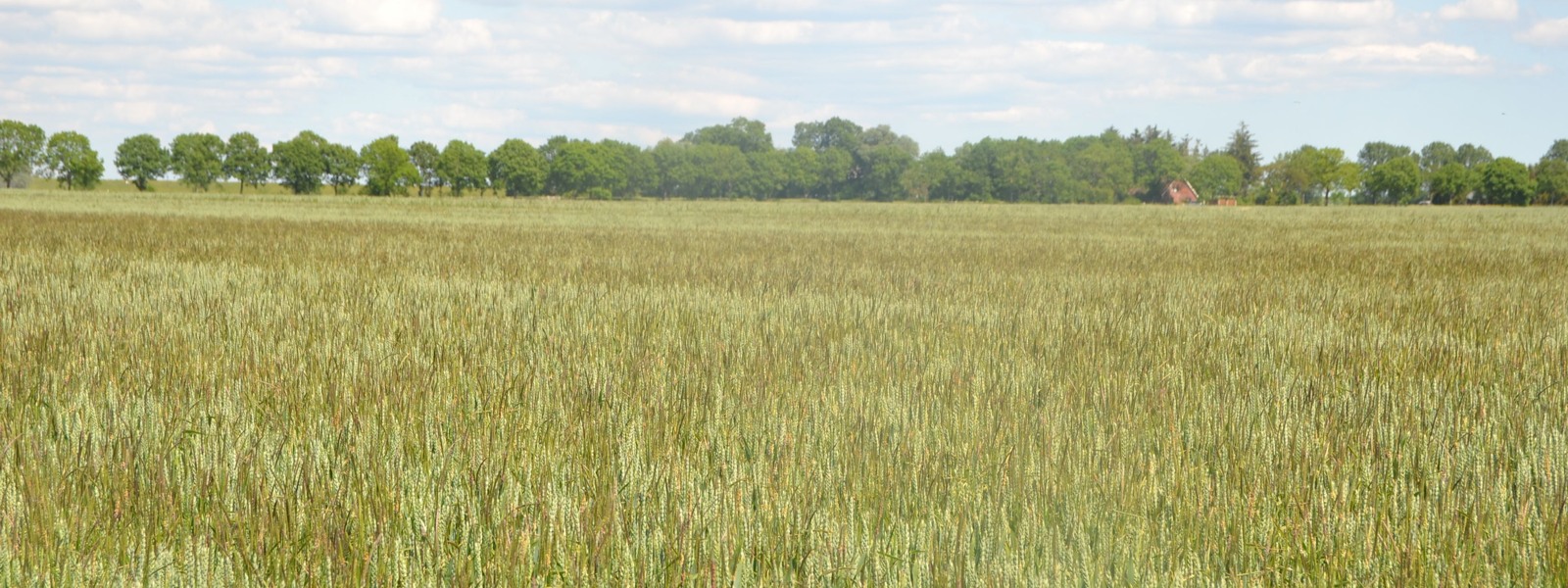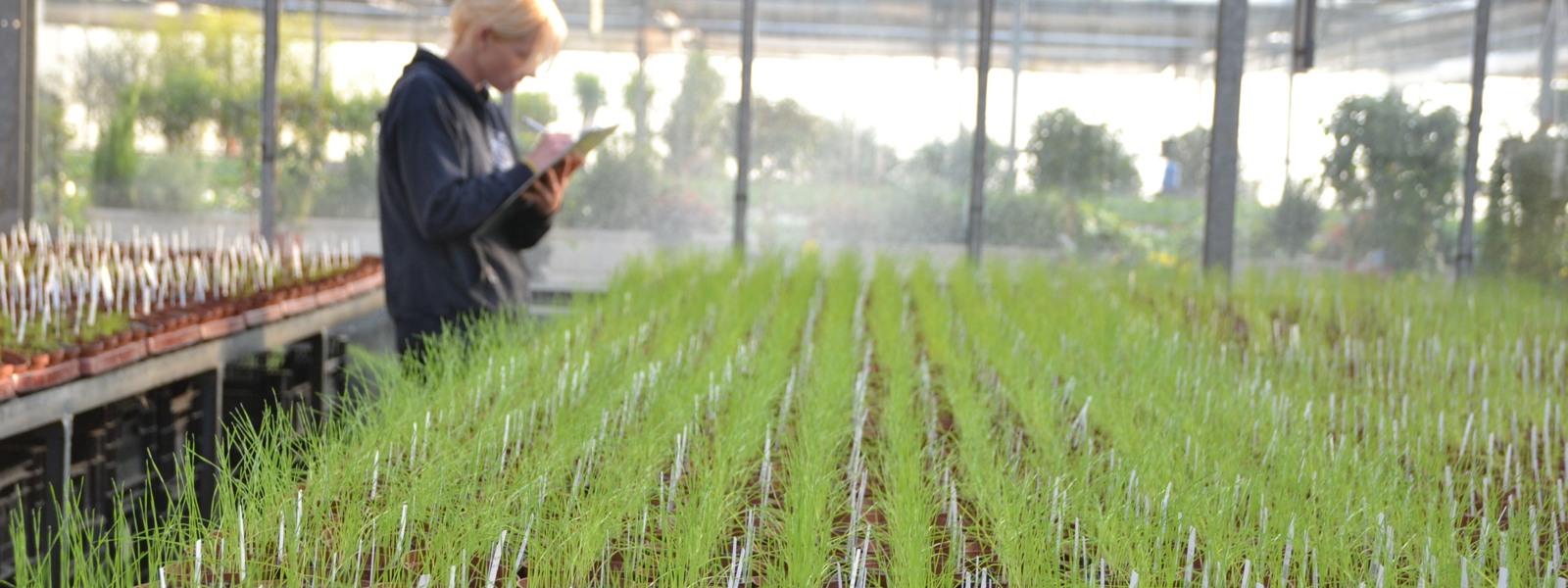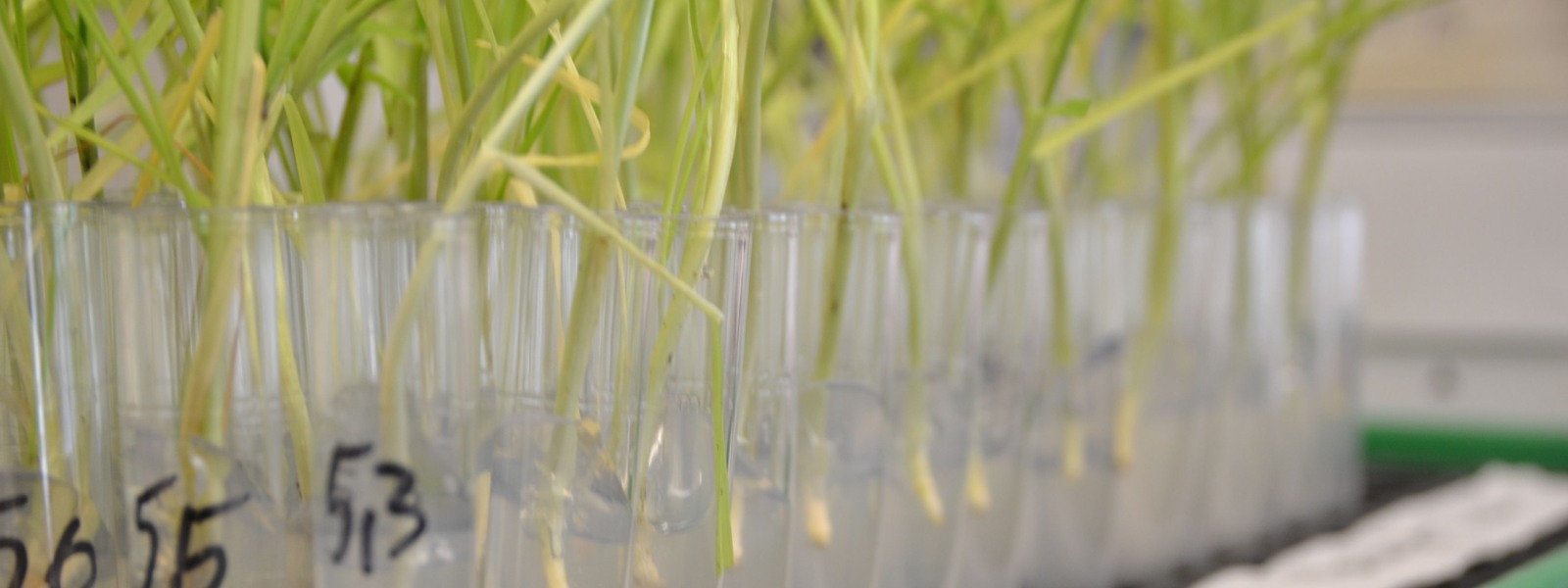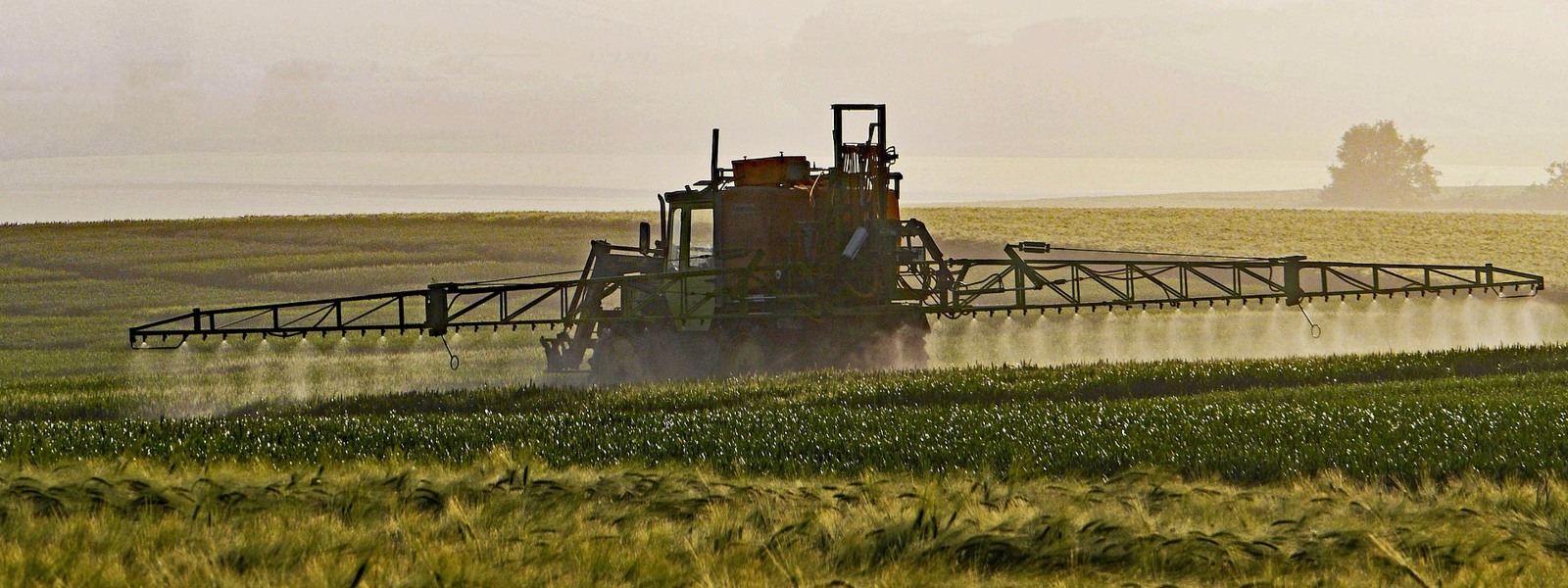To reliably assess herbicide resistance, we perform standardized greenhouse testing under controlled conditions — from seed collection to final evaluation.
The greenhouse trial starts on October 1st, following the drying and inspection of the seeds, with sowing into pots (diameter: 10 cm).
Since many grass species enter dormancy after summer seed collection, this timing is optimal and matches their natural biological cycle.
The pots are filled with steamed field soil, prepared as substrate during the summer months.
For sowing, a plant density of 15–20 plants per pot is targeted, corresponding to approximately 2,000 plants/m² in field conditions. After sowing, the seeds are covered with soil and a thin layer of quartz sand.
Application Timing and Germination
Just a few days after the first watering, pre-emergence herbicide application takes place (BBCH grasses < 09).
The germination follows this timeline:
- 6 days after watering: Germination of ryegrass and brome species
- 9 days after watering: Germination of blackgrass
- 12 days after watering: Germination of annual meadow grass
Once the first leaf has developed (BBCH 10), an early post-emergence application is carried out.
A second application follows at BBCH stage 13–14, approximately 14 days to 3 weeks after emergence.
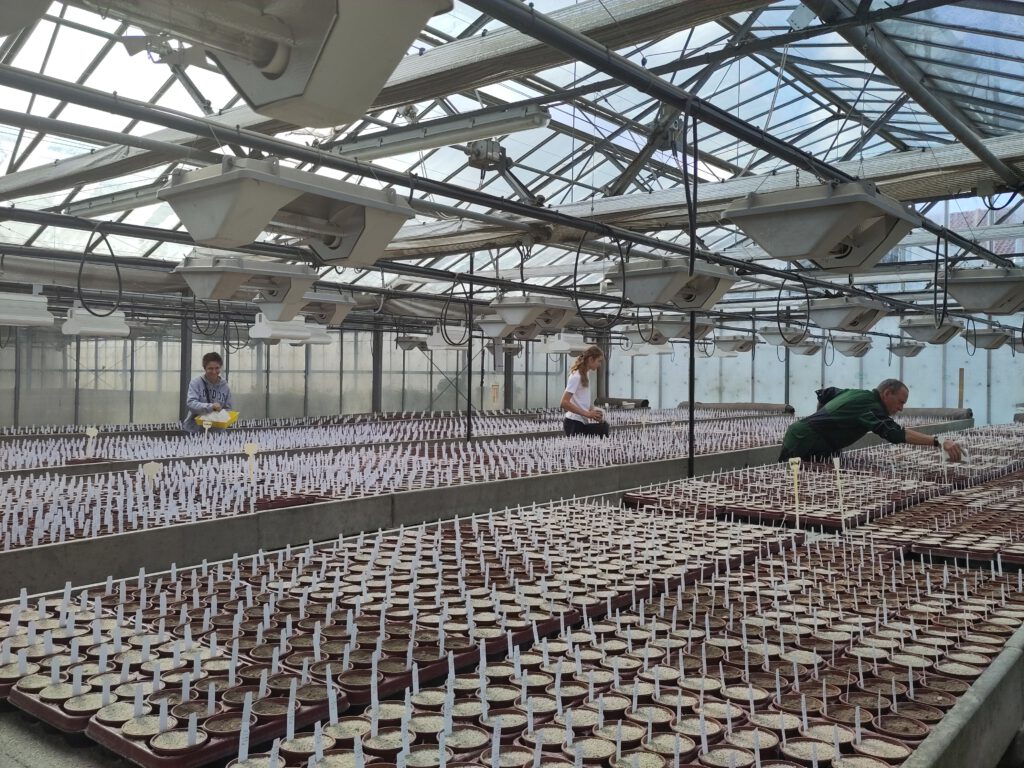
Sowing and covering with soil, followed by a final layer of quartz sand.
Precise Application in the Laboratory Spray Chamber: Herbicides are applied at the respective growth stages of the grasses using 200 l/ha of water volume.
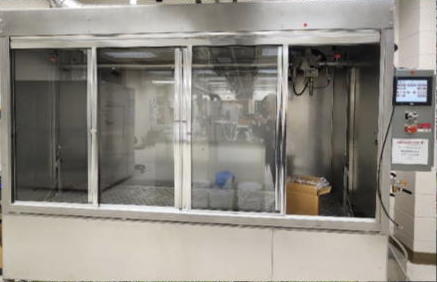
Assessment after 21 and 28 Days
About three days after the application of foliar-active herbicides in the post-emergence stage, plant growth largely ceases — except for the untreated control, which continues to develop freely, representing the optimal growth potential of each biotype under the given conditions.
After around ten days, the first treatment effects become visible. Interestingly, even resistant plants initially show growth depression, making it difficult to distinguish between sensitive and resistant grasses at this stage.
Only after 10 to 14 days do differences become apparent:
The leaves of sensitive plants start to pale — a clear sign of herbicidal action.
From this point on, development diverges: while sensitive plants gradually die off, resistant plants increasingly recover. Ideally, they eventually reach growth levels similar to the untreated control.

Starting December 10th, the results will be sent to farmers on a rolling basis — just in time for Christmas.



